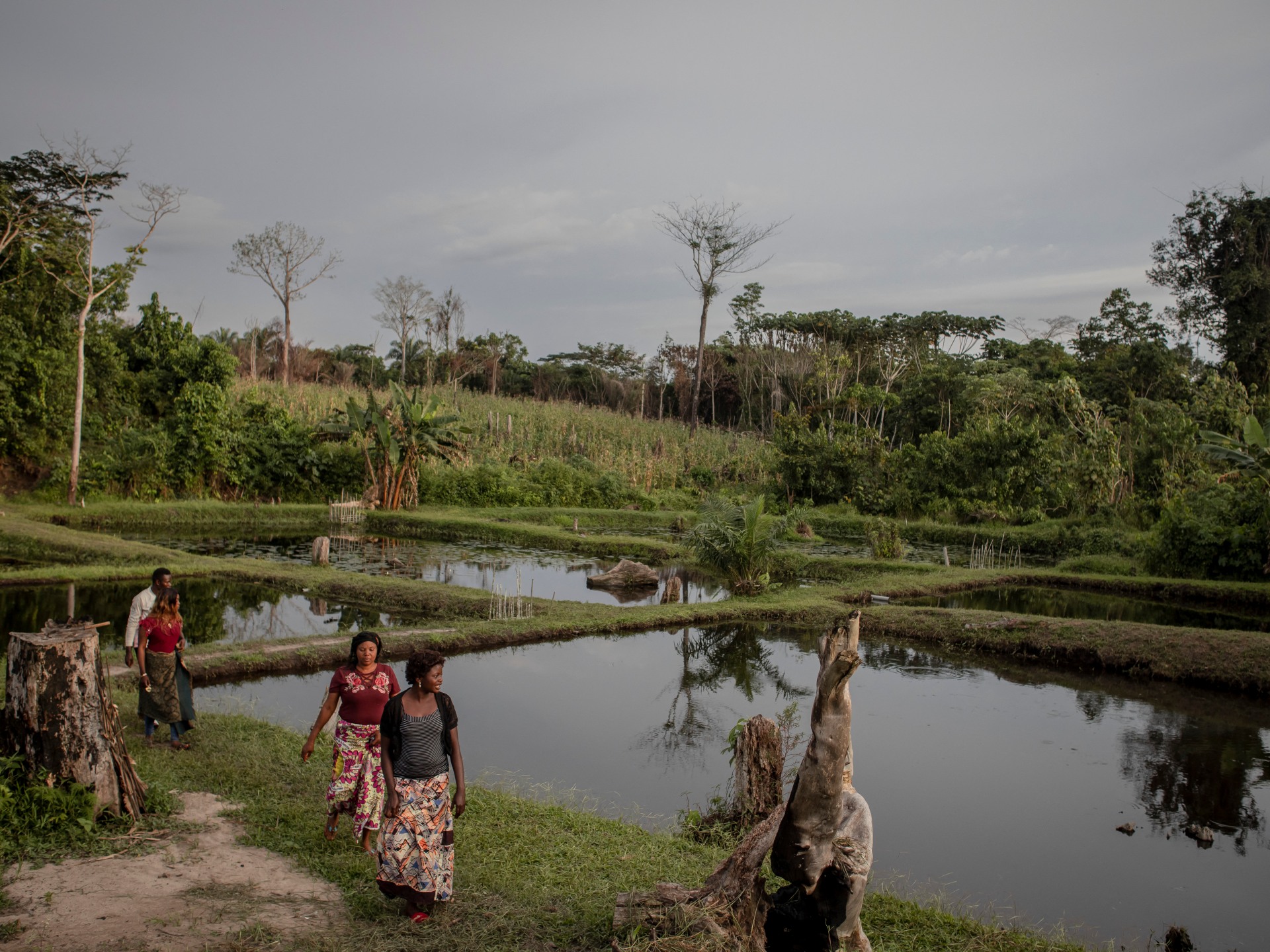A tower bristling with sensors juts above the canopy in northern Democratic Republic of the Congo, measuring carbon dioxide (CO2) emitted from the world’s second-largest tropical rainforest.
Spanning several countries in central Africa, the Congo Basin rainforest covers an immense area and is home to a dizzying array of species.
But concerns are growing for the future of the forest, deemed critical for sequestering CO2, as loggers and farmers push ever deeper inside.
Scientists at the Yangambi Biosphere Reserve in the DRC’s Tshopo province are studying the rainforest’s role in climate change – a subject that received scant attention until recently.
Standing 55 metres (180 feet) tall, the CO2-measuring flux tower came online in 2020 in the lush reserve of 250,000 hectares (620,000 acres). Yangambi was renowned for tropical agronomy research during the Belgian colonial era.
This week, it also hosted scientists as part of meetings in the DRC dubbed pre-COP 27, ahead of the COP27 climate summit in Egypt in November.
Thomas Sibret, who runs the CongoFlux CO2 measuring project, said that flux towers are common worldwide.
But until one was set up in Yangambi, there had been none in Congo, which had “limited our understanding of this ecosystem”, he said.
About 30 billion tonnes of carbon are stored across the Congo Basin, researchers estimated in a study in Nature in 2016. The figure is roughly equivalent to three years of global emissions.
Sibret said more time is required to draw definitive conclusions from the data gathered by DRC’s flux tower, but one thing is certain: the rainforest sequesters more greenhouse gases than it emits.
Paolo Cerutti, the head of the Center for International Forestry Research’s operations in the DRC, warned that slash-and-burn agriculture poses a particular threat to the future of the rainforest, pointing out that half a million hectares of forest were lost last year.
Slash-and-burn agriculture sees villagers cultivate lands until they become depleted, then clear forests to create new lands, and repeat the cycle. With the DRC’s population of about 100 million people set to expand, many worry the forest is in dire threat.
There are efforts to help farmers in the remote and impoverished region to make a living while sustaining the environment.
Helene Fatouma, the president of a women’s association, says fish ponds on the edge of the forest now yield 1,450 kilogrammes of fish in six months, as opposed to 30 previously.
Experts also encourage the use of more efficient kilns to produce more charcoal and teach loggers how to select which trees to fell.
